
How to Clean Faux Leather? Proven Cleaning & Care Strategies
Reading Time: about
Welcome to the ultimate guide on caring for faux leather! Whether you're a fashion enthusiast with a collection of faux leather jackets or a homeowner cherishing a faux leather sofa, understanding how to maintain and clean this versatile material is key.
Faux leather, with its luxurious look and affordability, has become a popular choice in fashion and furniture. But how do you keep it looking pristine?
In this comprehensive guide, we'll walk you through everything from routine cleaning to tackling tough stains, ensuring your faux leather stays as flawless as the day you bought it.
So, let’s dive into the world of faux leather care and unlock the secrets to keeping it in top-notch condition!
I. What Are The Different Types of Faux Leather?
Faux leather, also known as synthetic leather, is a fabric intended to mimic the look and feel of real leather but is made without using animal hides. It's a testament to human ingenuity, crafted from a variety of materials, including polyurethane (PU) and polyvinyl chloride (PVC). These materials are applied to a base layer, often made of polyester, to create a texture similar to that of natural leather.
1. Different Materials Used in Faux Leather
When we delve into the world of faux leather, it's fascinating to discover the variety of materials used in its creation. Primarily, faux leather is crafted from two main types of plastics: Polyurethane (PU) and Polyvinyl Chloride (PVC). Each of these materials brings unique characteristics to the table, influencing not only the texture and appearance of the faux leather but also its durability and maintenance needs.
a. Polyurethane (PU)
Let's start with Polyurethane, commonly known as PU Leather. PU is a type of plastic that's incredibly versatile and used in a myriad of applications, from furniture upholstery to fashion accessories. One of the key advantages of PU-based faux leather is its breathability. This characteristic makes it a preferred choice for items like clothing and upholstery, where comfort is a priority.
Another aspect where PU shines is its environmental footprint. It's generally considered more eco-friendly compared to PVC, as it doesn't release harmful dioxins during production or disposal. Moreover, PU faux leather is easier to care for and tends to be more flexible, mimicking the softness and suppleness of real leather more closely.
b. Polyvinyl Chloride (PVC)
Moving on to Polyvinyl Chloride, or PVC. This material is known for its durability and resistance to environmental factors like moisture and sunlight. PVC faux leather is a stalwart when it comes to withstanding wear and tear, making it an ideal choice for items that demand high durability, such as outdoor furniture or heavy-duty bags.
However, PVC does have its drawbacks. It's less breathable than PU, which can be a downside for clothing or seating materials. Additionally, the production of PVC often involves phthalates, which have raised environmental and health concerns. This has led to a growing preference for PU in many applications, though PVC still holds its ground in scenarios where robustness is key.
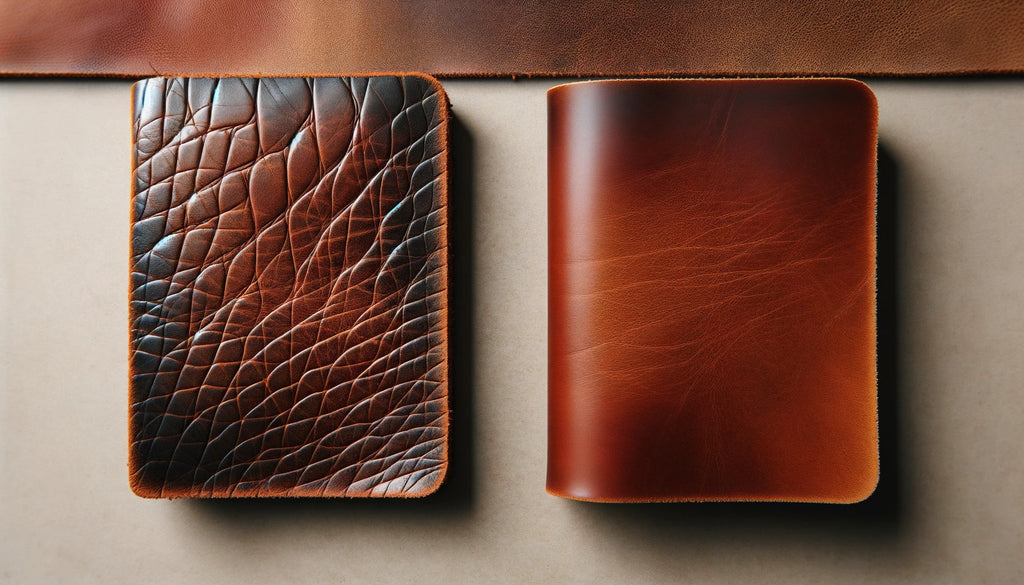
2. Characteristics of Each Type
a. Durability and Texture Variations
When we compare PU and PVC in terms of durability and texture, it's clear that both have their unique selling points. PU's flexibility and softness make it a go-to for products where a luxurious feel is desired, while PVC's resilience makes it unbeatable in scenarios that require a tough, long-lasting material.
b. Suitability for Different Uses
In terms of suitability, PU's breathability and flexibility make it ideal for clothing, handbags, and comfortable furniture upholstery. Its ability to mimic real leather's look and feel is unparalleled. On the other hand, PVC's water resistance and toughness make it suitable for outdoor furniture, book covers, and other items that need to withstand harsh conditions.
Understanding the differences between PU and PVC faux leather is crucial for making informed decisions, whether you're a consumer looking to purchase a faux leather item or a manufacturer choosing the right material for your products. Both materials have their pros and cons, and the choice ultimately depends on the specific requirements of the product in question.

II. Faux Leather Pre-Cleaning Considerations
1. Identifying the Type of Faux Leather
When we start thinking about cleaning faux leather, the first step is to identify what type of faux leather we're dealing with. This is crucial because different types of faux leather have different care requirements. Generally, faux leather is made from one of two materials: polyurethane (PU) or polyvinyl chloride (PVC). PU is softer and more flexible, often used in clothing and upholstery. PVC, on the other hand, is tougher and used in items that require more durability, like shoes and book covers.
a. Reading Labels and Manufacturer Instructions
Always start by checking the label or the manufacturer's instructions. This can often provide you with the most accurate information about the material and how to care for it. Labels typically indicate not only the material but also specific cleaning instructions or warnings. For instance, some faux leather products might advise against the use of certain chemicals or suggest a particular method of cleaning. Ignoring these instructions can lead to damage, so it's always best to adhere to the guidelines provided.
b. Visual and Tactile Tests
If the label is missing or unreadable, you can perform some simple visual and tactile tests to determine the type of faux leather. PU leather usually has a more realistic texture, resembling genuine leather, and is more pliable. PVC leather can feel a bit plastic-like and is usually stiffer. By feeling the material, you can often tell the difference. PU tends to be warmer and more breathable, whereas PVC can feel cold and less flexible.
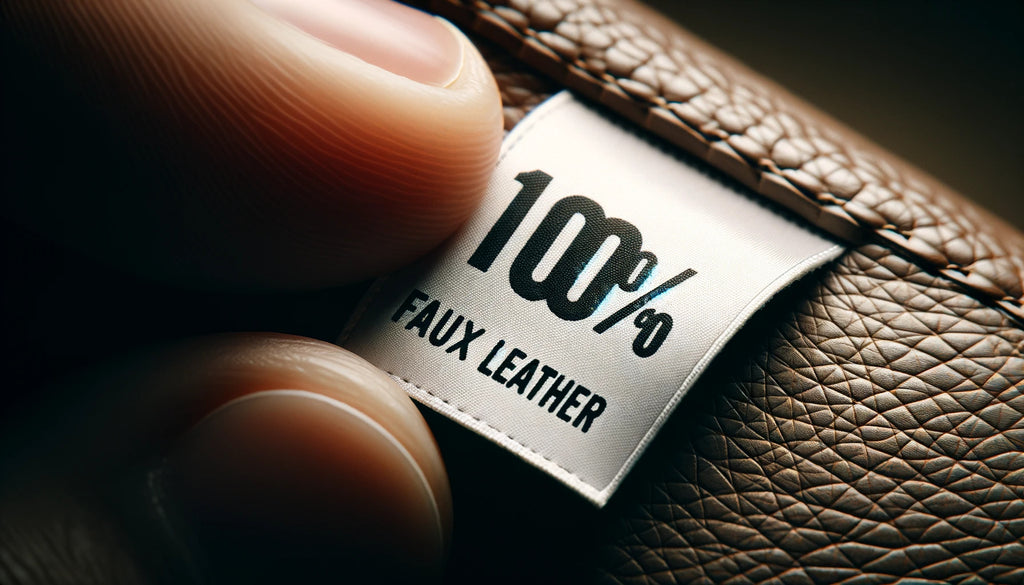
2. Assessing the Condition
a. Identifying Stains and Damage
Before diving into cleaning, it's important to assess the condition of your faux leather item. Look for any stains, spills, or areas of damage. Different types of stains (like ink, food, or oil) will require different cleaning methods. Also, check for signs of wear and tear, such as cracking or peeling. These areas will need special attention and a gentler cleaning approach to prevent further damage.
b. Determining the Cleaning Approach
Once you've identified the type of faux leather and assessed its condition, you can determine the most suitable cleaning approach. For routine cleaning, a simple solution of mild soap and water will often suffice. However, for tougher stains, you might need a specialized cleaner or a different technique. Remember, the goal is to clean effectively while preserving the integrity of the faux leather. Always test any cleaner on a small, inconspicuous area first to ensure it doesn’t cause damage.
Understanding the type of faux leather and its current condition is key to choosing the right cleaning method. This not only ensures effective cleaning but also helps in maintaining the longevity and appearance of your faux leather items. Remember, a little bit of care can go a long way in keeping your faux leather looking its best.
III. How to Clean Faux Leather?
1. Routine Cleaning Methods
When it comes to maintaining the pristine condition of faux leather, routine cleaning is essential. I've found that regular upkeep not only keeps faux leather looking new but also extends its lifespan. The key here is consistency and using the right techniques.
a. Dusting and Wiping Techniques
Start with a soft cloth or microfiber duster to gently remove surface dust. This should be a regular practice, ideally once a week. For a more thorough clean, dampen a cloth with lukewarm water and gently wipe the surface. It's important to avoid soaking the material; faux leather doesn't take kindly to excessive moisture. After wiping, always use a dry cloth to remove any lingering dampness. This method is particularly effective for faux leather furniture and accessories, ensuring they remain dust-free and fresh.
b. Appropriate Cleaning Solutions
While there are many cleaning products available, I recommend a mild soap solution for routine cleaning. Mix a small amount of mild, bleach-free soap with water, and apply it sparingly with a soft cloth. This solution is gentle enough not to damage the faux leather while being effective in removing dirt and light stains. For items like jackets or bags, a specialized faux leather cleaner can be a good investment, offering targeted care without harsh chemicals.
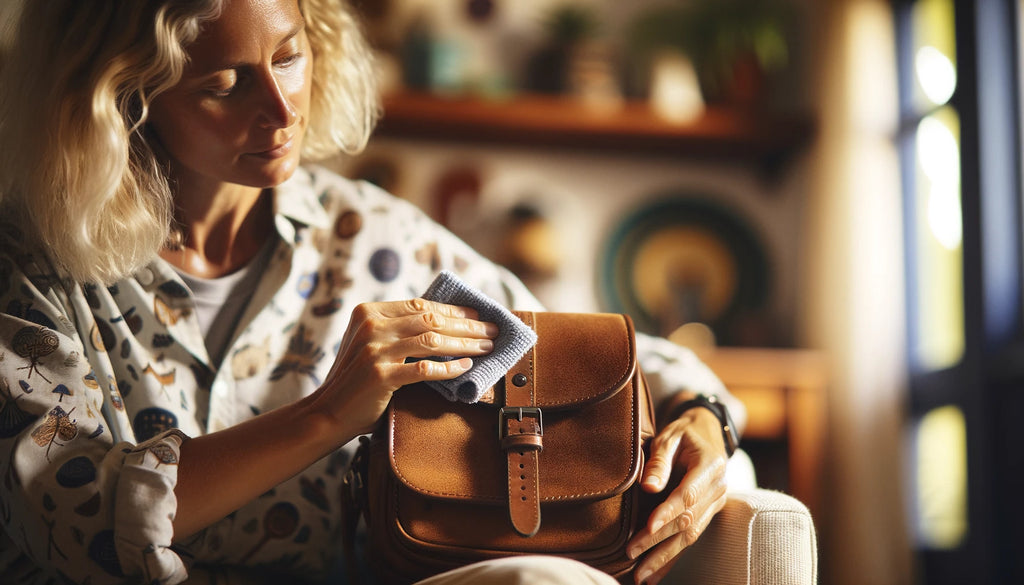
2. Stain Removal Strategies
No matter how careful we are, stains on faux leather are inevitable. But don't worry, there are effective ways to tackle them without causing damage.
a. Treating Common Stains with Gentle Soap and Water
For common stains like spills from food or drinks, a solution of mild soap and water is your first line of defense. Apply the solution with a soft cloth, gently dabbing at the stain. Avoid rubbing vigorously as this can damage the surface. Once the stain is lifted, wipe the area with a damp cloth and then dry it thoroughly. This method works wonders on most everyday stains and keeps your faux leather in top condition.
b. Using Isopropyl Alcohol for Tough Stains
For more stubborn stains, such as ink or marker, isopropyl alcohol can be a lifesaver. Apply a small amount on a cotton ball and gently dab the stain. Be sure to test this on an inconspicuous area first to ensure it doesn't affect the color or texture of the faux leather. Once the stain is removed, clean the area with a damp cloth and dry it immediately. Remember, the key is to act quickly; the longer a stain sits, the harder it is to remove.
3. Deep Cleaning Practices
Occasionally, faux leather requires a more thorough cleaning to rejuvenate its appearance and maintain its integrity.
a. When and How to Perform a Deep Clean
I recommend deep cleaning faux leather every few months or when it starts to look dull. Start by vacuuming the surface with a brush attachment to remove any loose dirt. Then, use a mild soap solution, applying it with a soft cloth in a circular motion. This method ensures that you're not only cleaning the surface but also nourishing the material.
b. Tools and Techniques for Effective Deep Cleaning
For deep cleaning, you'll need a soft cloth, mild soap, a soft-bristled brush for stubborn dirt, and a dry cloth for drying. After cleaning with the soap solution, if you notice any persistent grime, gently use the brush in a circular motion. Once you're done, wipe the surface with a damp cloth to remove any soap residue and then dry it thoroughly. This deep cleaning process revitalizes faux leather, making it look as good as new.
Maintaining faux leather doesn't have to be a daunting task. With these simple yet effective cleaning techniques, you can keep your faux leather items looking great for years to come. Remember, the key is regular care and using the right methods for different types of cleaning. Happy cleaning!
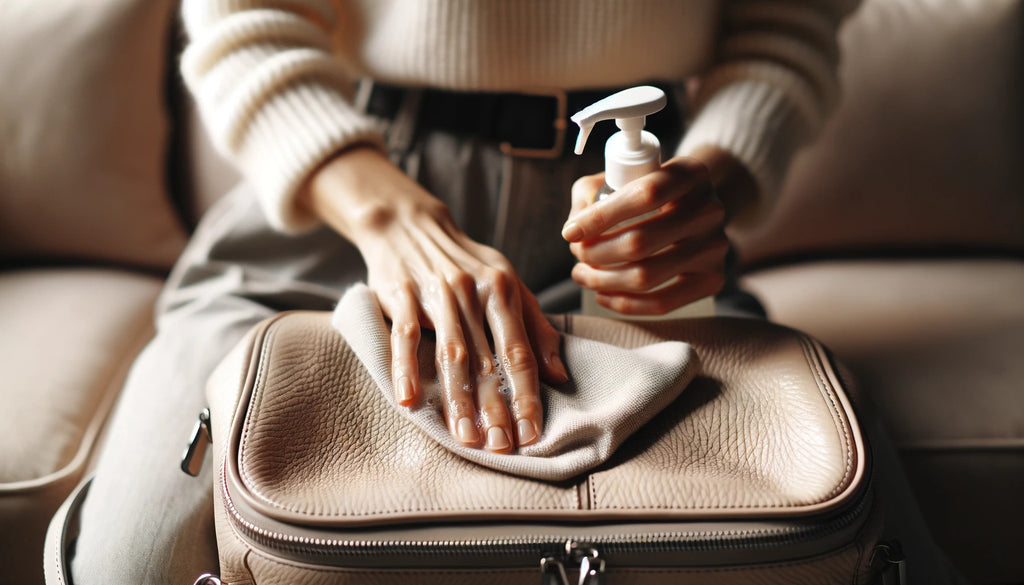
IV. Faux Leather Items Special Considerations
Faux leather, with its versatility and durability, has become a popular choice in various products ranging from clothing to furniture. However, the approach to cleaning and maintaining these items can vary significantly based on their use and exposure. In this section, we'll delve into the tailored approaches for cleaning different faux leather items, ensuring that they remain in pristine condition.
1. Clothing
When it comes to faux leather clothing, such as jackets or pants, the key is gentle care. Start by checking the care label for any specific instructions from the manufacturer. Usually, a damp cloth can be used for a quick surface clean. For a deeper clean, mix a solution of warm water and mild detergent. Dip a soft cloth into the solution and wring it out so it's damp, not wet. Wipe down the garment, paying special attention to any stains or spots.
After cleaning, hang the clothing in a well-ventilated area away from direct sunlight to dry. Never use a tumble dryer as the heat can damage the material. If the faux leather starts to look a bit dry or loses its sheen, a small amount of faux leather conditioner can be applied. Remember, over-conditioning can lead to a build-up of residue, so use sparingly.
2. Shoes
Faux leather shoes require regular maintenance to keep them looking their best. Remove any surface dirt with a soft brush or cloth. For tougher stains, a mixture of mild soap and water can be applied with a soft cloth. It's important to avoid soaking the shoes as this can damage the material.
Once cleaned, allow the shoes to air dry naturally. Avoid placing them near heat sources as this can cause the material to warp or crack. To maintain the shape of the shoes, consider using a shoe tree or stuffing them with paper while they dry. A protective spray can be applied to guard against water damage and stains.
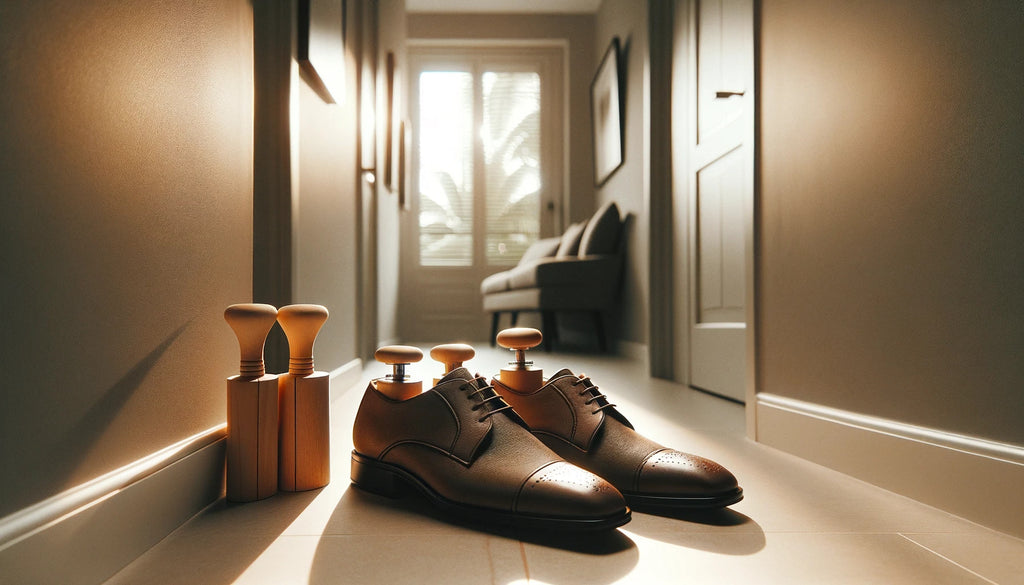
3. Bags
Cleaning faux leather bags requires a delicate touch. Begin by emptying the bag and dusting off any loose dirt. Using a soft, damp cloth, gently wipe the exterior. For persistent stains, a small amount of gentle soap can be used, but be sure to test it on an inconspicuous area first.
After cleaning, wipe the bag with a dry cloth and let it air dry. Avoid direct sunlight and heat sources. To maintain the bag's shape, stuff it with soft material like bubble wrap or tissue paper while it dries. Regularly check for any loose threads or hardware, and address them promptly to prevent further damage.
4. Furniture
Faux leather furniture, such as sofas and chairs, often faces more wear and tear than other items. Regular dusting with a soft cloth can prevent dirt accumulation. For spills, immediately wipe them off with a dry cloth to prevent staining. For a deeper clean, use a solution of mild detergent and water, applying it with a soft cloth in a circular motion.
Rinse the cloth and wipe off any soap residue, then dry with a clean towel. It's crucial to avoid over-wetting the furniture as it can seep into the cushioning. To maintain the furniture's appearance, consider using a faux leather protector spray after cleaning. This can help repel stains and extend the life of your furniture.
By understanding the specific needs of each faux leather item, you can ensure they remain in excellent condition for years to come. Regular maintenance, coupled with the right cleaning techniques, will keep your faux leather products looking as good as new.
V. How to Maintain and Care For Faux Leather?
1. Preventive Measures
When it comes to maintaining faux leather, prevention is key. By taking proactive steps, you can significantly extend the life and appearance of your faux leather items. Let's delve into some effective preventive measures.
a. Protecting from Sunlight and Heat
One of the most crucial aspects of faux leather care is protecting it from excessive sunlight and heat. Prolonged exposure to direct sunlight can cause faux leather to fade, dry out, and even crack over time. This is particularly important for faux leather furniture and automotive interiors, which are often exposed to sunlight through windows.
To mitigate this, I recommend using window treatments like blinds or curtains to limit direct sunlight exposure. For items like jackets or bags, storing them in cool, shaded areas away from direct heat sources can make a significant difference. If you have faux leather car seats, consider using a windshield sun protector when parking in sunny areas. This simple step can prevent the material from heating up excessively and sustaining damage.
b. Avoiding Harmful Chemicals
Another vital aspect of faux leather care involves steering clear of harmful chemicals. Many cleaning agents contain solvents and other harsh chemicals that can degrade faux leather over time. This includes products like bleach, ammonia-based cleaners, and even some hair sprays or perfumes.
Instead, opt for mild, pH-neutral cleaning solutions specifically designed for faux leather. If you're unsure about a product, it's always wise to test it on a small, inconspicuous area first. Regularly wiping down your faux leather with a soft, damp cloth can also prevent buildup of dirt and oils that might degrade the material.

2. Conditioning Faux Leather
Conditioning faux leather is as important as cleaning it. Proper conditioning helps maintain the suppleness and prevents the material from drying out and cracking.
a. Benefits of Natural Oils for Conditioning
Natural oils can be a great option for conditioning faux leather. Products like baby oil, coconut oil, or even a small amount of olive oil can be used sparingly to rejuvenate the material. These oils help in keeping the faux leather soft and flexible, thus extending its lifespan.
When using oils, apply a small amount on a soft cloth and gently rub it onto the surface in a circular motion. Be careful not to overdo it – a little goes a long way. After applying, wipe off any excess oil with a clean cloth. This process not only conditions the material but also gives it a fresh, revitalized look.
b. Recommended Conditioners for Faux Leather
There are also commercial conditioners available that are specifically formulated for faux leather. These products are designed to provide the right balance of moisture without damaging the material. Look for conditioners that are silicone-based or water-based, as they are less likely to leave a residue or cause damage over time.
When selecting a conditioner, consider the type of faux leather you have. PU and PVC, the two most common types, may respond differently to various conditioners. Always follow the manufacturer’s instructions for the best results.
Caring for faux leather involves a combination of preventive measures and regular conditioning. By protecting it from harsh elements and using the right products, you can ensure that your faux leather items remain in pristine condition for years to come. Remember, a little effort in maintenance can save a lot of hassle in repairs and replacements down the line.
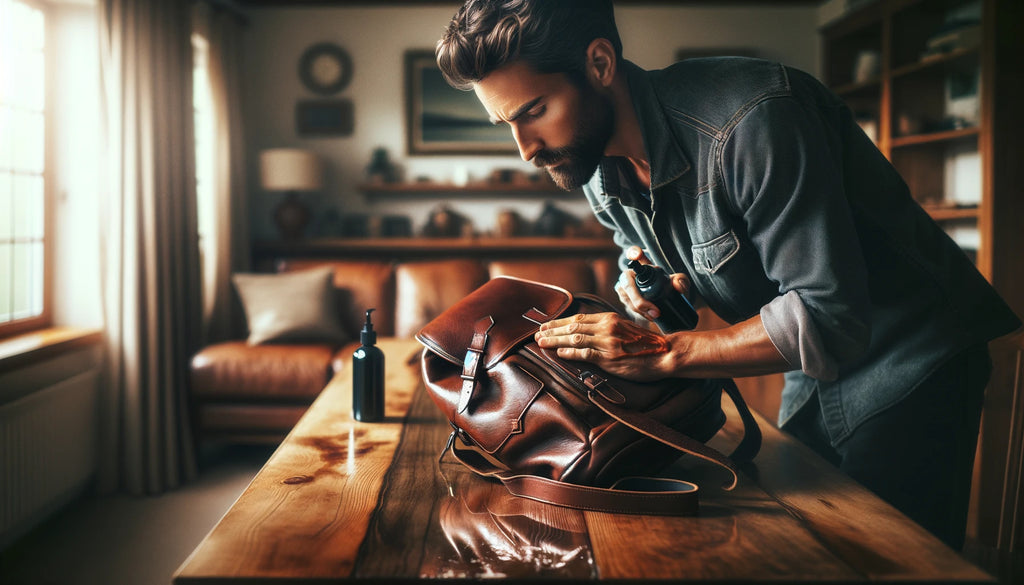
VI. Advanced Tips and Tricks
1. Professional Cleaning Techniques
As a seasoned expert in leather care, I've come to appreciate the value of professional cleaning techniques, especially when it comes to maintaining the pristine condition of faux leather. There are times when the DIY approach might not suffice, and seeking professional help becomes imperative.
a. When to Seek Professional Help
Understanding when to turn to a professional for faux leather cleaning is crucial. If you're dealing with extensive damage, like deep-set stains, significant discoloration, or severe peeling and cracking, it's time to consult a professional. These issues often require specialized techniques and products that are not typically available to the average consumer.
Another scenario where professional intervention is advisable is when dealing with high-value or sentimental items. In such cases, the risk of further damage from amateur attempts at cleaning or repair is not worth taking. Professionals have the expertise to handle these delicate situations with care.
b. What to Expect from Professional Services
When you entrust your faux leather items to a professional cleaner, expect a thorough assessment followed by a tailored cleaning approach. Professionals use advanced techniques like color matching, retexturing, and protective coating applications that go beyond surface cleaning. They might also employ pH-balanced cleaners and conditioners specifically formulated for faux leather.
The process typically starts with a detailed inspection to identify problem areas. This is followed by a gentle cleaning process using specialized tools and solutions. If necessary, professionals might perform minor repairs like fixing peeling or cracks. Finally, they often apply a protective layer to guard against future wear and tear.

2. Innovative Home Remedies
While professional services are invaluable, there are also innovative home remedies that can be surprisingly effective for maintaining and refreshing faux leather.
a. Natural Ingredients for Cleaning and Conditioning
In my experience, natural ingredients can work wonders on faux leather. For routine cleaning, a solution of equal parts water and white vinegar can gently cleanse the surface. For tougher stains, baking soda mixed with water to form a paste can be applied gently and then wiped off.
Conditioning faux leather is also essential to keep it supple and prevent cracking. Natural oils like coconut oil or olive oil can be used sparingly. Apply a small amount using a soft cloth, rub it gently, and buff off any excess. This not only cleans but also leaves a protective sheen that enhances the appearance of faux leather.
b. Creative Solutions for Tough Stains
Tackling tough stains on faux leather requires creativity and caution. For ink stains, rubbing alcohol can be effective. Apply a small amount on a cotton ball and dab gently on the stain. For grease stains, a sprinkle of cornstarch or talcum powder can absorb the oil. Let it sit for a few hours before brushing it off gently.
Remember, always test these solutions on an inconspicuous area first to ensure they don't cause any damage. And, if you're ever in doubt, it's better to consult a professional than risk harming your faux leather item.
Whether you opt for professional cleaning services or try innovative home remedies, the key is to approach faux leather care with knowledge and caution. By doing so, you'll ensure your faux leather items remain in top condition for years to come.
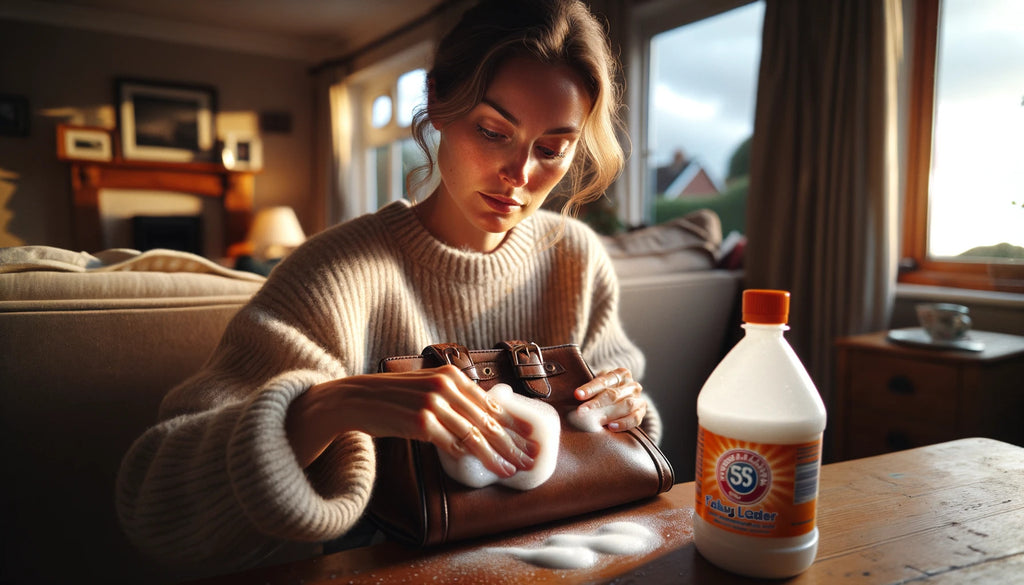
VII. How to Repair Faux Leather?
1. Identifying Repairable Damage
When it comes to faux leather, not all damage is created equal. As a leather expert, I've seen a variety of issues, from minor scratches to severe peeling and cracks. The key to successful repair lies in correctly identifying what can be fixed and what might be beyond repair.
a. Scratches, Peeling, and Cracks
Scratches are the most common issue with faux leather. They can range from superficial marks to deeper cuts. Superficial scratches are often repairable at home. Deeper scratches, however, may require more intricate methods or professional intervention.
Peeling and cracking, on the other hand, are signs of more severe wear or aging. Peeling often occurs due to prolonged exposure to heat or direct sunlight, while cracks can develop from dryness or stress on the material. Small areas of peeling and minor cracks can be addressed with DIY methods, but extensive damage might necessitate professional restoration.
b. DIY Repair vs. Professional Services
Deciding between DIY repair and professional services depends on the extent of the damage and your comfort level with repair techniques. DIY can be cost-effective for minor issues and is quite satisfying for those who enjoy hands-on work. However, for extensive or complex damage, professional services are recommended to ensure a high-quality finish and to prevent further deterioration.
2. Step-by-Step Repair Guide
Repairing faux leather requires patience, precision, and the right tools. Let's walk through the steps to address common damages.
a. Tools and Materials Needed
To begin, gather the following tools and materials:
- Leather repair kit (specifically for faux leather)
- Fine-grit sandpaper
- Clean cloths
- Leather adhesive
- Colorant matching your faux leather
- Sponge or small brush
- Leather sealant
b. Detailed Repair Instructions
-
Clean the Area: Start by cleaning the damaged area with a mild soap and water solution. Dry it thoroughly with a clean cloth.
-
Sand Down Rough Edges: For scratches or peeling, lightly sand the area with fine-grit sandpaper. This helps to smooth out rough edges and prepare the surface for repair.
-
Apply Leather Adhesive: If there's peeling, apply a thin layer of leather adhesive beneath the peeled section. Press it down firmly and allow it to dry as per the manufacturer's instructions.
-
Colorant Application: Once the adhesive is dry, apply the colorant. Use a sponge or small brush for an even application. It's crucial to match the colorant to your faux leather's color as closely as possible.
-
Seal the Repair: After the colorant dries, apply a leather sealant. This will protect the repair and give it a finished look.
-
Condition the Leather: Finally, condition the repaired area to ensure it blends seamlessly with the rest of the piece. Use a faux leather conditioner and apply it gently over the entire surface.
Remember, while these steps can effectively address minor to moderate damage, they may not be suitable for severe cases. In such instances, consulting a professional is the best course of action.
By following these guidelines, you can extend the life of your faux leather items, keeping them looking their best for years to come. Remember, regular maintenance and prompt attention to any damage can significantly reduce the need for extensive repairs.

Conclusion
In this guide, we've navigated the nuances of faux leather care, equipping you with the knowledge to maintain its elegance and durability. From understanding the unique characteristics of different faux leather types to mastering cleaning and maintenance techniques, we've covered the essentials to ensure your faux leather items remain as lustrous as the day you acquired them.
Remember, the longevity of faux leather lies in your hands. Regular, gentle cleaning, coupled with mindful maintenance, can significantly extend the life and appearance of your faux leather goods. Whether it's your favorite couch, jacket, or accessory, treating it with the right care will keep it looking splendid for years.
In essence, caring for faux leather isn't just about preserving a material; it's about cherishing the value and beauty it adds to our lives. With the insights and tips from this guide, you're now well-equipped to give your faux leather the love and care it deserves.
FAQs
What is the Best Cleaner for Faux Leather?
When it comes to cleaning faux leather, the key is to use a gentle, non-abrasive cleaner. A mixture of mild soap (like dish soap) and water works well for routine cleaning. For a more specialized approach, commercial faux leather cleaners are available that are formulated to clean without damaging the material. Avoid using harsh chemicals, solvents, or detergents, as they can strip the finish and cause damage.
Can You Wash Faux Leather in the Washing Machine?
Generally, it's not advisable to wash faux leather in a washing machine. The agitation and soaking in water can damage the material, leading to cracks or peeling. Instead, spot clean stains and wipe down the surface with a damp cloth. If you have faux leather clothing, refer to the care label for specific instructions, as some newer materials may be more tolerant to gentle washing.
How Do You Clean Fake Leather Couches?
To clean a faux leather couch, start by vacuuming or dusting the surface to remove loose dirt. Then, use a soft cloth dampened with a mixture of mild soap and water to wipe down the couch. Avoid soaking the material and use a dry cloth to wipe away any excess moisture. For tougher stains, a small amount of rubbing alcohol on a cotton ball can be effective. Always test any cleaner on a small, inconspicuous area first.
Can I Use Dawn to Clean Faux Leather?
Yes, Dawn or any mild dish soap can be used to clean faux leather. Mix a small amount of Dawn with water to create a sudsy solution. Use a soft cloth to apply the solution to the faux leather, gently rubbing in a circular motion. Afterwards, wipe the area with a clean, damp cloth to remove soap residue, and dry with a soft towel.
How Often Should Faux Leather be Conditioned?
Faux leather should be conditioned every three to six months to keep it supple and prevent cracking. Use a conditioner specifically designed for faux leather. Apply a small amount of conditioner to a soft cloth and gently rub it into the material in a circular motion, covering the entire surface.
What Should I Do if My Faux Leather Starts Peeling?
If your faux leather starts peeling, you can try applying a leather repair kit that matches the color of your item. These kits usually contain a compound that can be used to fill in cracks and peeled areas. After applying, allow it to dry completely. For extensive damage, consulting a professional upholstery repair service is recommended.
Is it Safe to Use Baby Wipes on Faux Leather?
While baby wipes are gentle, they may contain chemicals or lotions that could damage faux leather over time. It's safer to use a cloth dampened with water and mild soap for cleaning. If you choose to use baby wipes, opt for fragrance-free and alcohol-free ones, and always test on a small area first.
How Can I Remove Ink Stains from Faux Leather?
To remove ink stains from faux leather, gently dab the stain with a cotton swab soaked in rubbing alcohol. Do not rub, as this can spread the ink. Blot gently until the stain lifts. After removing the stain, clean the area with a mild soap solution and dry it with a soft cloth.
Can Faux Leather be Repaired if it Gets Torn?
Yes, small tears in faux leather can often be repaired using a leather repair kit. These kits typically include a patch material and adhesive. Clean the area around the tear, apply the adhesive, and then place the patch over the tear. For larger tears or extensive damage, professional repair services are recommended.
Are There Any Specific Products to Avoid When Cleaning Faux Leather?
Avoid using products containing bleach, ammonia, or harsh solvents, as these can damage faux leather. Also, steer clear of abrasive cleaners or scrubbers that can scratch the surface. Stick to mild soaps and cleaners specifically designed for faux leather to ensure its longevity and appearance.
📫 Related Blog Posts:
📌 How to Paint Leather? Master the Art of Leather Painting
📌 How to Darken Leather? From Faded to Fabulous
📌 What is Eco Leather? The Future of Sustainable Fashion
📌 How to Restore Leather? A Complete Guide to Revive Your Leather













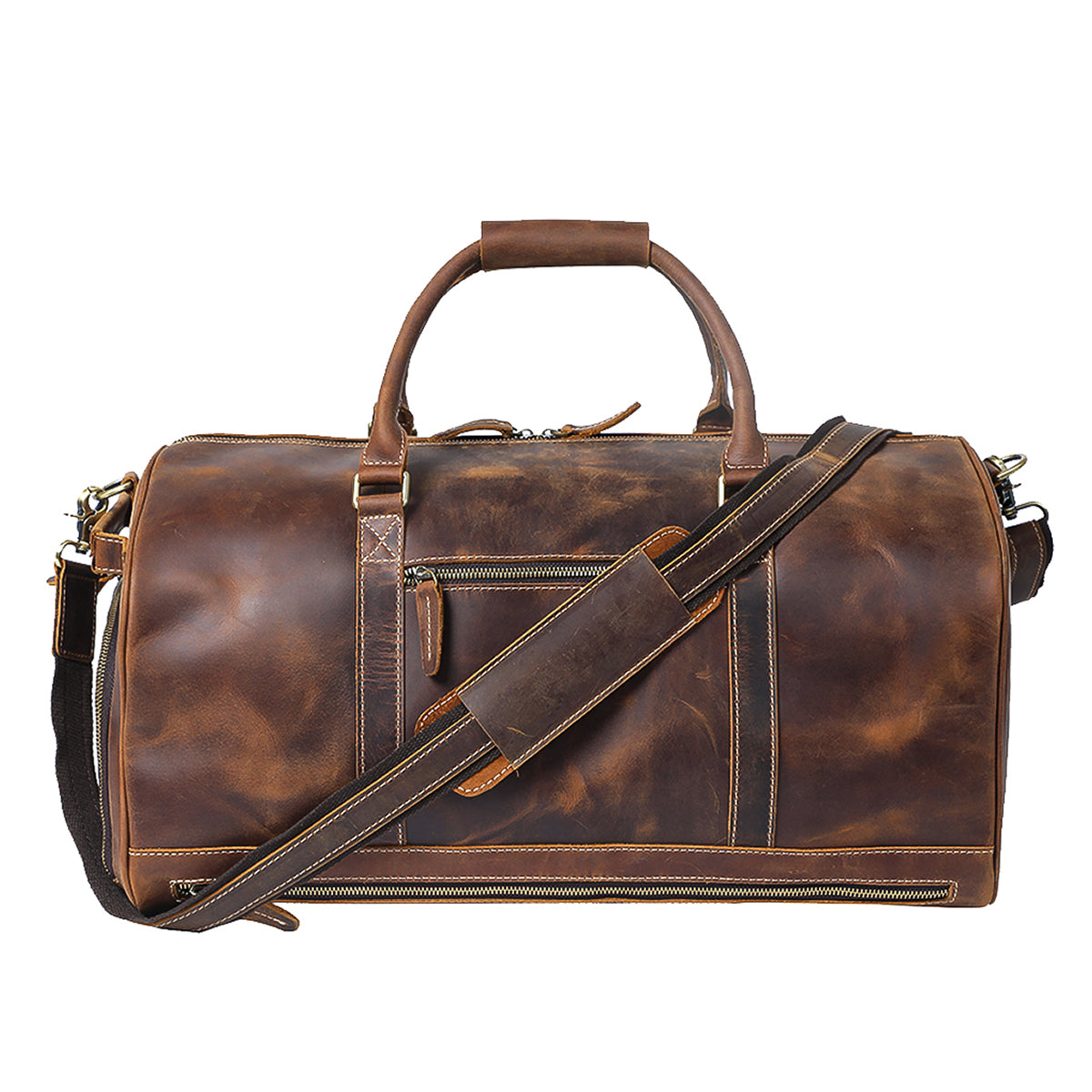















Leave a comment